Cultivating success and standing out from the crowd: Navigating the Evolving Gin Industry for Craft Spirits Entrepreneurs in 2024.
Journeying through the spirited world of Craft Gin, we unveil the secrets to cultivating marketing success in the ever-evolving Gin market as we begin to prepare for 2024. In this insightful guide, we explore the essential strategies and tactics to stand out in a crowded global marketplace, carving your niche and crafting a flourishing future in the world of small batch Gin.
The Current Landscape of the Gin Industry
The world of gin is a dynamic and ever-evolving one. As the market for craft spirits continues to expand, gin has found itself in a unique position. It's a spirit with a rich history, yet it's also at the forefront of innovation and experimentation. In this chapter, we will delve into the current landscape of the gin industry, exploring the trends and challenges that gin brands face today.
In recent years, there has been a resurgence of interest in gin. Craft distilleries have been popping up all over, each offering their own unique take on this classic spirit. Consumers are no longer content with the mass-produced, one-size-fits-all gins that dominated the market in the past. They crave variety, quality, and a story behind the bottle.
Gin Lane 1751 opted for a tradition British labelling aesthetic, with a hint of art nouveau.
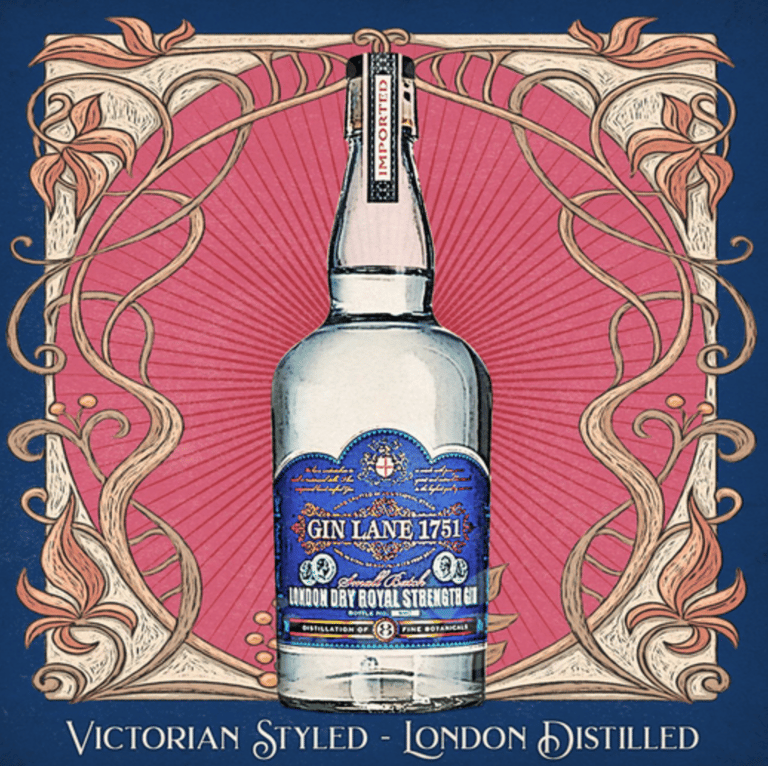


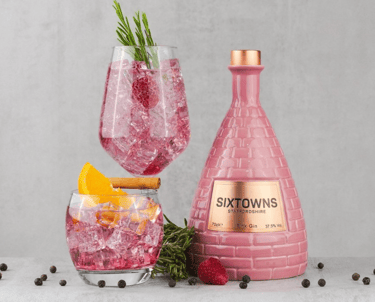
The Challenges Gin Brands Face
While the resurgence of gin presents exciting opportunities, it also comes with its fair share of challenges. One of the most pressing challenges is the saturation of the market. With so many new gin brands entering the scene, it's becoming increasingly difficult to stand out and capture the attention of consumers.
The Need for Brand Differentiation
To succeed in this competitive landscape, gin brands must prioritize brand differentiation. They need to identify what sets them apart from the rest and communicate that distinctiveness effectively. This goes beyond having a catchy label or an interesting name; it's about creating a unique identity that resonates with consumers.
The Importance of Marketing Strategy
Marketing plays a crucial role in the success of any gin brand. However, many craft distilleries underestimate the power of effective marketing. They may rely on word-of-mouth or sporadic social media posts, failing to build a comprehensive marketing strategy that reaches their target audience consistently.
Sixtowns of Staffordshire celebrate the cities industrial ceramics heritage with their unique brickwork bottle.
Crafting Effective Distribution Models
Another challenge gin brands face is ensuring their products reach consumers in the right places. The distribution landscape is changing, with a shift toward more selective and targeted distribution models. Brands that fail to adapt to these changes may find themselves struggling to secure shelf space in a highly competitive market.
In the chapters that follow, we will delve deeper into each of these challenges, providing actionable insights and strategies to help gin brands navigate the complexities of the industry. Whether you're an established gin business looking to reinvigorate your brand or a newcomer seeking to make a mark, this guide will equip you with the knowledge and tools to thrive in the world of craft spirits. So, let's dive in and explore the fascinating journey of gin brands in today's market.
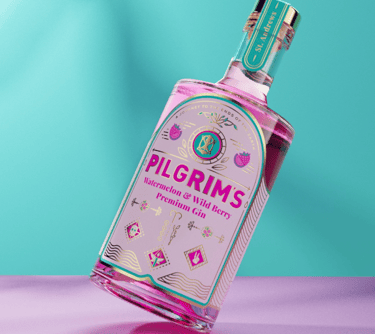

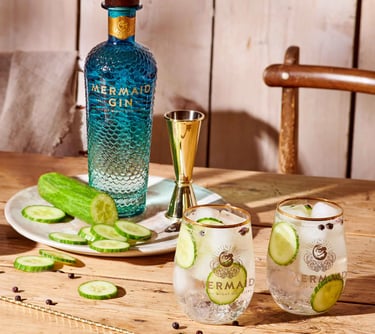




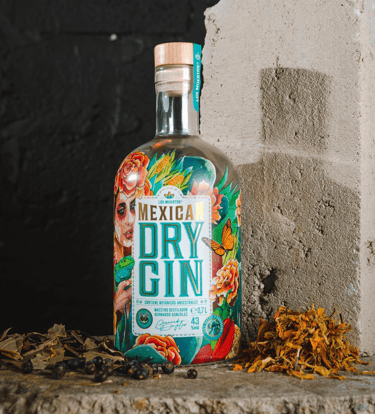
Pilgrims Gin from Scotland choosing a brand visual that contrasts their heritage and opts for bold and bright colours.
Isle of Wight Distillery's Mermaid Gin sets itself apart with its ombre, scale textured bottle.
Mallorca Distillery chose to take inspiration from their Mediterranean heritage and its architecture in the design for their Palma Gin bottle.
Los Muertos Mexican Dry Gin's design embodies everything 'Day of the Dead' - painted skulls, bright tropical colours and traditional Mexican flora and fauna.
In the world of gin, where craft spirits and premium offerings are becoming increasingly prevalent, the need for brand differentiation has never been more critical. Your gin business must not only compete with other players in the market but also capture the hearts and palates of discerning consumers. In this chapter, we'll explore the key aspects of brand differentiation and why it's a cornerstone of success in the craft gin business.
Understanding brand differentiation is essential in the competitive gin industry. To create a unique identity, gin producers must emphasize craftsmanship and the distinctive flavors of their product. Crafting a unique identity forms the bedrock of brand differentiation, emphasizing the craft and artistry behind gin production, along with highlighting the distinct flavor profiles that set one's gin apart from the rest. The advantages of such differentiation are manifold, as it enables brands to stand out in a crowded market, attracting consumers seeking something special, while fostering consumer loyalty through the identification with the brand's unique qualities, ultimately providing a competitive edge that competitors can't easily replicate. The benefits are equally compelling, with differentiation potentially leading to increased sales as consumers actively seek out these unique offerings, bolstering brand loyalty and allowing for price flexibility as consumers may be willing to pay a premium for a truly unique gin.
Developing a Unique Selling Proposition (USP) further enhances brand differentiation. This involves a multi-faceted approach, beginning with the crucial step of defining what genuinely makes a particular gin special and distinct from others. Market research becomes pivotal, as understanding consumer preferences and desires is essential in tailoring the USP to resonate effectively with the target audience. The advantages of this process are significant, as a well-defined USP provides clear and compelling messaging for marketing efforts, enhancing consumer appeal, and enabling effective competitive positioning within the market. The resulting benefits are far-reaching, as the USP serves as the foundational element for marketing strategies, contributing to strong brand recognition and increasing the likelihood of achieving long-term success in the competitive world of gin production.
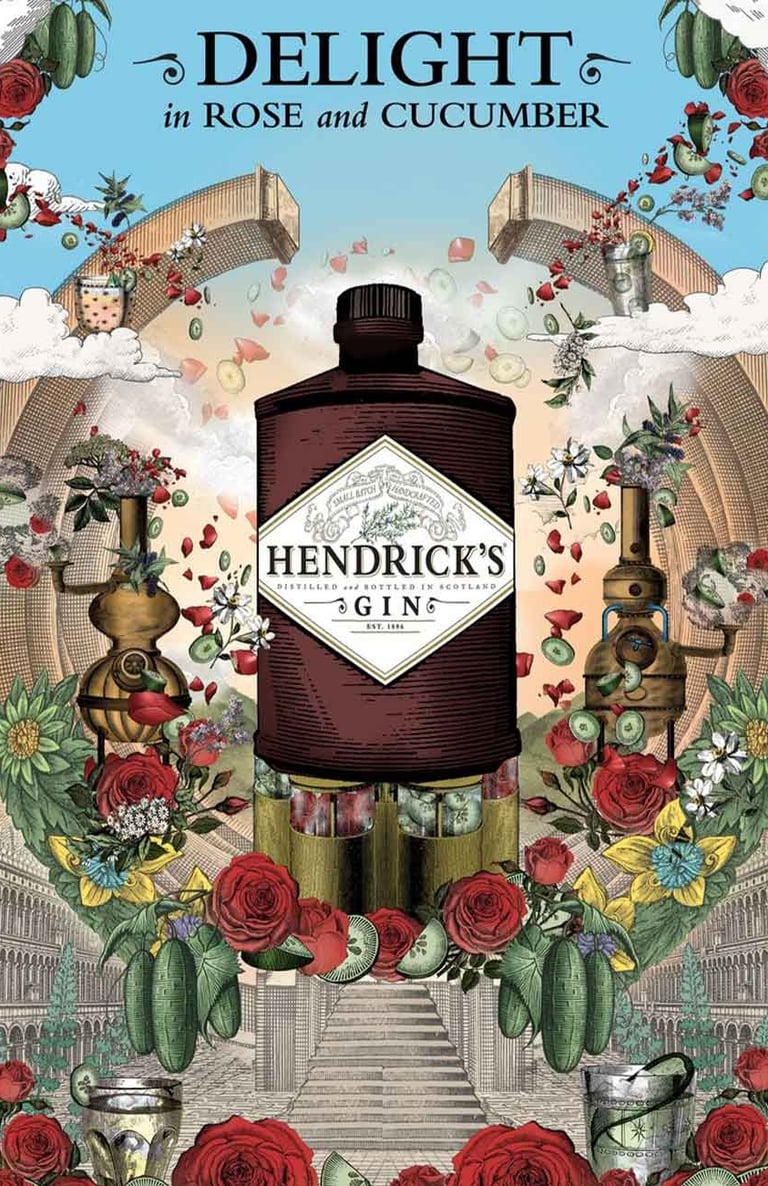

The Importance of Brand Differentiation
Hendricks have curated a unique and striking visual identity that portrays quality, luxury and pays homage to Gin's victorian Heritage through the use of maximalist collage.
The Role of Marketing Strategy
In the ever-evolving landscape of the gin business, crafting an effective marketing strategy is not just an option; it's a necessity. While some may underestimate the power of marketing, successful gin brands recognize it as a key driver of growth and brand recognition. In this chapter, we will delve into the critical role of marketing strategy in the world of craft gin and explore the elements that can elevate your brand to new heights. Evolving in a competitive gin market demands a keen understanding of key features essential for brand survival and growth. Recognizing the dynamic nature of the gin market is the first crucial step, acknowledging that it is constantly evolving. Adaptability becomes imperative, as gin producers must be prepared to pivot and transform their brand to remain relevant and competitive. Embracing innovation and experimentation is equally essential to keep offerings fresh and captivating. The advantages of this approach are clear; an evolving brand maintains relevance and appeal to changing consumer preferences, demonstrating market resilience by weathering industry shifts more effectively, and fostering consumer engagement through novel experiences. The benefits of this adaptive strategy are far-reaching, positioning the brand as a market leader by staying ahead of industry trends, attracting new segments of the market, and ultimately experiencing sustained growth. As we delve deeper into this article, you'll discover more strategies and insights to help you differentiate your gin brand effectively. Crafting a unique identity and a compelling Unique Selling Proposition (USP) are just the beginning of your journey towards success in the competitive world of craft gin, where adaptability, innovation, and responsiveness to market dynamics are indispensable.
Understanding the often-neglected aspects of marketing is paramount for success in the competitive gin market. Effective marketing entails a holistic approach, encompassing various elements from branding to distribution, and it demands a long-term vision, focusing on building a brand that endures beyond immediate sales. It acts as the bridge between your brand and your target audience, increasing brand awareness, fostering engagement, and strategically positioning your gin brand in the market, ultimately leading to increased sales, brand loyalty, and sustainable growth. Dispelling the myth of being discovered, it's crucial to recognize that a proactive effort is imperative in this competitive landscape. Identifying your target audience and reaching out to them directly is key, as competitors are actively vying for consumer attention. Marketing grants you control over the narrative and messaging around your brand, ensuring it remains relevant and top of mind, consequently enabling you to gain and maintain a share of the market, position your brand as an industry leader, attract new customers, and communicate effectively with your audience. Avoiding the pitfalls of incomplete marketing is equally vital. Piecemeal marketing efforts can result in inconsistent messaging, missed growth opportunities, and a competitive disadvantage against brands with robust strategies. A comprehensive marketing approach, covering all aspects of brand promotion, ensures consistent messaging across all channels, optimizes resource utilization, fosters brand cohesion, operates efficiently, and maximizes the impact of your marketing efforts. As we delve into the world of gin marketing, we'll explore various channels, tactics, and best practices to help your craft gin business thrive in this competitive and dynamic market. Effective marketing is not a luxury but a strategic imperative in today's gin industry, encompassing the holistic, proactive, and comprehensive aspects that we've discussed here.
As we wrap up our exploration of the gin industry, it's essential to reflect on the key takeaways and the ongoing evolution of gin brands. Throughout this article, we've delved into various facets of the gin business, from understanding the current landscape to crafting effective distribution models. Now, let's recap the essential points and consider the future of gin brands.
Key Takeaways
In this article, you've gained valuable insights into the world of gin marketing, business strategies, and brand development. Here are the key takeaways:
Brand Differentiation Matters: To stand out in the competitive gin market, you must differentiate your brand. This involves developing a unique selling proposition, enhancing flavor profiles, creating eye-catching packaging, and crafting a coherent brand identity.
Marketing Strategy Is Crucial: Marketing is often a neglected aspect of the gin business. However, it's essential to dispel the myth of being discovered and instead focus on building a solid marketing strategy. Leveraging social media, influencer marketing, and events can be game-changers.
Distribution Strategy Drives Success: Crafting an effective distribution strategy is the backbone of success. Prioritizing sell-through over selling in, supporting your product at every stage, and adapting to market changes are vital components of distribution.
Measuring ROI Is Essential: To ensure the effectiveness of your marketing campaigns, it's crucial to measure ROI and evaluate campaign performance. This data-driven approach allows you to refine your strategies for better results.
Category Contraction and Curation: In the evolving gin landscape, it's important to understand the dynamics of category contraction and curation. Taking a multi-channel approach can help you navigate these changes successfully.
The Ongoing Evolution of Gin Brands
The gin industry is dynamic and ever-evolving. As consumer preferences shift and new trends emerge, gin brands must adapt to stay relevant. Here are some trends and considerations for the ongoing evolution of gin brands:
Craft Spirits Are Thriving: Craft spirits, including gin, continue to gain popularity. Consumers appreciate the craftsmanship and unique flavors offered by artisanal gin brands.
Health and Wellness: As health-conscious consumers seek lower-alcohol options, the gin industry has responded with a variety of low-alcohol and zero-alcohol alternatives.
Sustainability Matters: Sustainable and eco-friendly practices are becoming increasingly important to consumers. Gin brands that embrace sustainability in production and packaging can appeal to eco-conscious buyers.
Digital Presence: In an increasingly digital world, having a strong online presence is essential. Investing in digital marketing, e-commerce, and engaging content can help gin brands reach a wider audience.
Innovation Is Key: Innovations in flavor profiles, botanicals, and distillation techniques can set gin brands apart. Experimentation and creativity are highly valued by consumers seeking unique gin experiences.
The gin industry presents both challenges and opportunities for gin brands. By focusing on brand differentiation, crafting effective marketing and distribution strategies, and staying attuned to industry trends, gin brands can thrive in this dynamic market. Remember that the world of gin is ever-changing, and adaptability is the key to continued success. Cheers to the future of gin brands and their journey in the world of craft spirits!
Conclusion
The Scottish Orkney Distillery differentiated by turning north, taking influence from the brands proximity to Scandinavia.

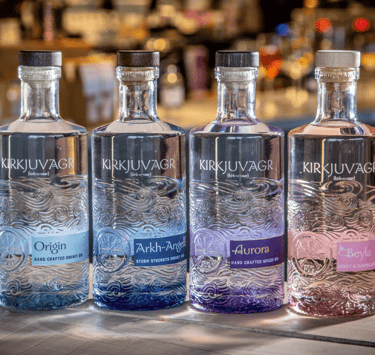
Looking to elevate your Premium Craft Spirit Brand in 2024? Reach out to us at Studio Nostalgia Rose.
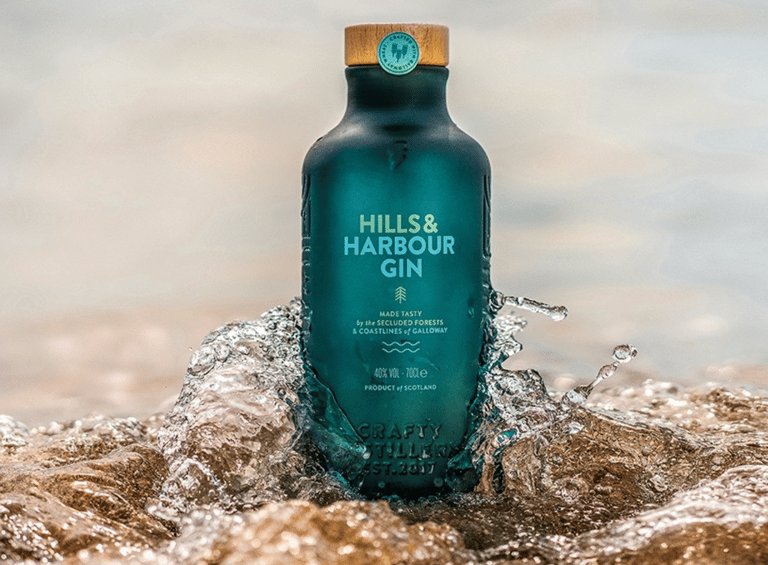



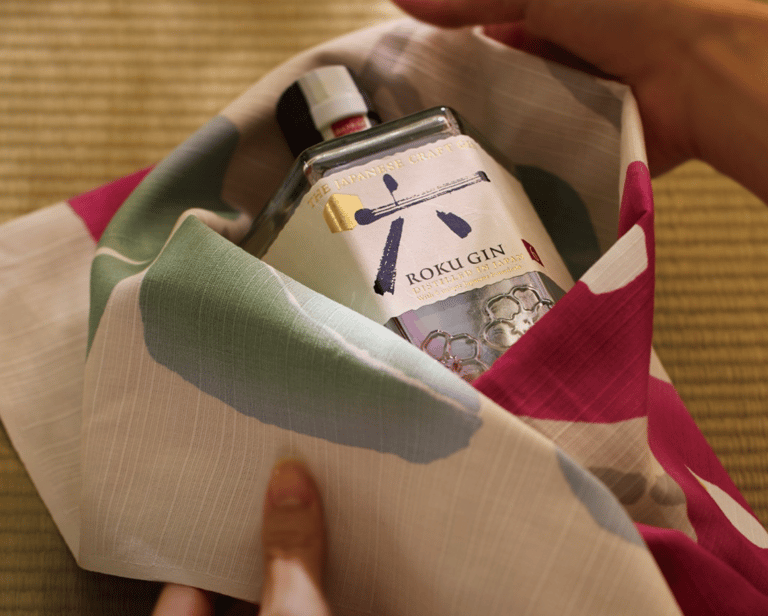

Roku Gin oozes Japanese vibes in its logo design, bottle embossing, and social media visuals created a solid and striking brand identity.

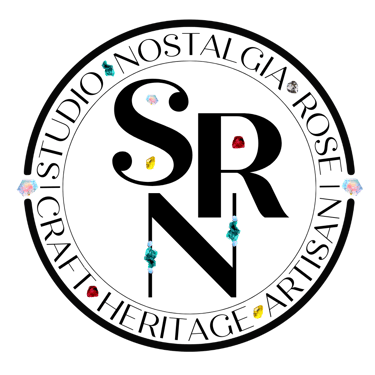
Popular mid weight brand Beefeater wowed with their Limited edition Crown Jewel Gin in a stunning crimson glass bottle with gold labelling, exuding exclusivity and luxury.
Hills & Harbour differentiated themselves to great success with a unique bottle shape, colour and frosted feel.


